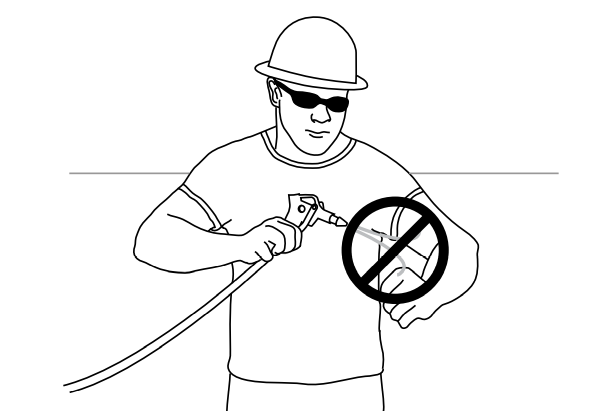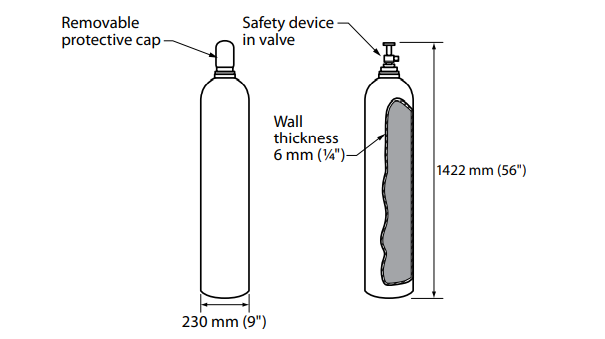LEARNING TASK 2 : Describe short-term hazards in the trades
Compressed gas
Compressed air is used in shops and on-site for operating nailers, staplers, impact tools, equipment, and paint sprayers. However, cleaning objects, machinery, bench tops, clothing, and other items with compressed air is dangerous. Injuries can be caused by the air jet and by particles made airborne. If compressed air must be used to clean equipment, the nozzle pressure must remain below 10 psi (69 or 70 kPa) and personal protective equipment (PPE) must be worn to protect the worker’s body, especially the eyes, against particles and dust under pressure.

Compressed gases are often supplied to the job site in pressurized cylinders. Extreme caution should be used when working with these cylinders, as a damaged cylinder is an explosion hazard. A screw-on protective cap protects the cylinder valve. The cylinders and protective caps are usually black, although green and other colours are also used. The caps have right-hand threads (like all oxygen fittings) and come in various sizes to match the cylinders.

The following safety procedures must be observed:
- Do not accept or use any compressed gas cylinder that does not have proper identification of contents.
- Always treat cylinders as if they are full and handle accordingly.
- Never drop cylinders or let them strike each other violently.
- Protect cylinders and any related piping and fittings against damage.
- Do not use slings or magnets for hoisting cylinders.
- Transport cylinders securely on a hand truck whenever possible. NEVER drag them.
- Secure transported cylinders to a suitable cradle or platform to prevent movement or upset.
- Chalk “EMPTY” or “MT” on cylinders that are empty. Close valves and replace protective caps.
- For detailed handling procedures, consult the manufacturer, the supplier, and the MSDS.
Storing cylinders
These safety measures must be observed when storing gas cylinders:
- Store cylinders upright in a safe, dry, well-ventilated location that is maintained specifically for this purpose.
- Never store different flammable and combustible materials such as oil and gasoline in the same area.
- Do not store cylinders near elevators, walkways, stairwells, or exits, or in places where they could be damaged or knocked over.
- Do not store oxygen cylinders within 6 m (20 ft.) of cylinders containing flammable gases unless they are separated by a partition at least 1.5 m (5 ft.) high that has a fire-resistance rating of at least 30 minutes.
- Store empty and full cylinders separately.
- Prohibit smoking in the storage area.

